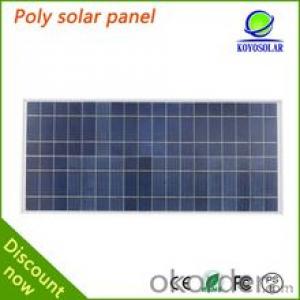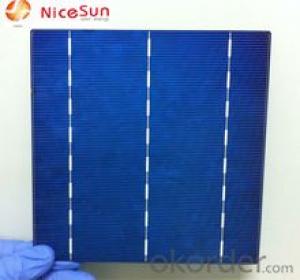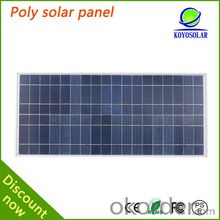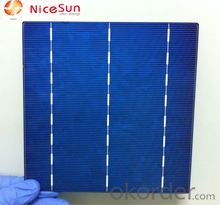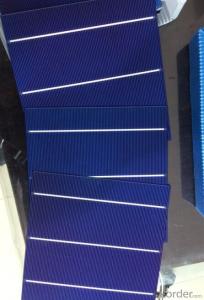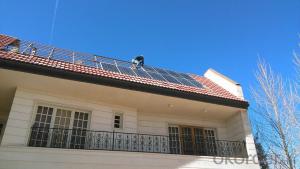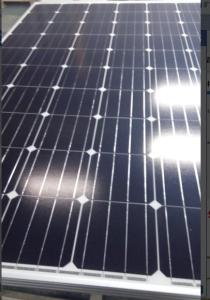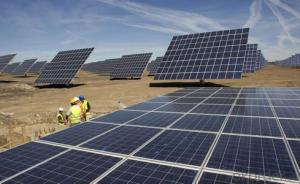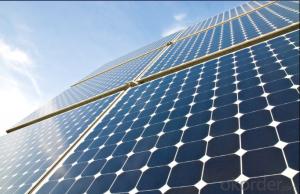Roof Tile Solar Cells - Best Sell A Grade Cell Mono and Poly Crystal Panel CNBM
- Loading Port:
- Qingdao
- Payment Terms:
- TT OR LC
- Min Order Qty:
- 100 set
- Supply Capability:
- 300000 set/month
OKorder Service Pledge
OKorder Financial Service
You Might Also Like
Quick Details
Place of Origin: | China (Mainland) | Brand Name: | cnbm | Model Number: | KY-SP180 |
Material: | Polycrystalline Silicon | Size: | 1580*805*40mm | Max. Power: | 180w |
Warranty: | 10 years | Samples: | Available in stock | QC inspection: | 100% |
OEM/ODM/Customized: | Yes | Maximum Power Voltage Vm (V): | 36 | Maximum Power Current Im (A): | 5 |
Open Circuit Voltage Voc (V): | 42.48 | Short Circuit Current Isc (A): | 5.5 | Dimension: | 1580*805*40mm |
Packing: | 2 pcs per carton |
Packaging & Delivery
Packaging Detail: | 2 pieces per carton |
Delivery Detail: | Samples with 3 days; Bulk quantity within 15 working days. |
Specifications
1.panel solar
2.KOYO Group
3.manufacturer in China
Product Description
Do you want more details about our product?
1. Peak Power Pm (W): 180
2. Maximum Power Voltage Vm (V): 36
3. Maximum Power Current Im (A): 5
4. Open Circuit Voltage Voc (V): 42.48
5. Short Circuit Current Isc (A): 5.5
6. Module Dimension W*L*H (mm): 1580*805*40
7. Mounting Hole Longitudinal Space (mm): 269
8. Mounting Hole Horizontal Space (mm): 955
9. Mounting Hole Size (mm): 4-φ9×13
Packaging & Shipping
Packaging
1. Inner Box Size L*W*H (mm): 1385*1035*100
2. Carton Size L*W*H (mm): 1385*1035*150
3. Packing (pcs): 2
4. Net Weight (KG): 16
5. Gross Weight (KG): 35
Shipping
1. FedEx/DHL/UPS/TNT for samples, Door-to-Door.
2. By Air or by Sea for batch goods, for LCL and FCL; Airport/ Port receiving.
3. Customers specifying freight forwarders or negotiable shipping methods.
4. Delivery Time: 3-7 days for samples; 5-25 days for batch goods.
Payment Terms
1. Payment: T/T, Western Union, Money Gram. (50% deposits; 50% balance before delivery)
2. MOQ: 500pcs
3. Warranty: 10years workmanship; Guarantee the power 90% in the first 12 years; Guarantee the power 80% in 25years.
Feature
What is the advantage of our product?
Our Services
1. We are a factory manufacturing all kinds of solar products, with the best production capability, the best quality control and the best Service.
2. Self-marketing: We design, develop and manufacture products by ourselves.
3. The best price.
Our Services
1. 100% QC inspection before shipment.
2. We provide OEM and ODM services.
FAQ
FAQ
Q1: What is the business type for the company?
A1: We are manufacturer,We design, develop and manufacture products by ourselves.
Q2: How many warranty you offer?
A2: 10years workmanship; Guarantee the power 90% in the first 12 years; Guarantee the power 80% in 25years. If there is any quality problem, we will pay for freight and send free parts to you.
Q3: Which certificate do you have?
A3: We have CE, Rosh, PSE, FCC and so on.
Q4: Can I be the agent for you?
A4: Yes, let's discuss the detailed information.
Q5: How to get a free sample?
A5: It is very easy to get a free sample, just become our VIP member. For more details, please contact us.
- Q: Can solar cells be used on vehicles?
- Yes, solar cells can be used on vehicles. They can be integrated into the design of cars, buses, boats, and even planes to harness solar energy and provide power for various vehicle functions such as charging batteries, running electrical systems, or even powering the entire vehicle. This helps reduce reliance on fossil fuels, lowers emissions, and promotes sustainable transportation.
- Q: Can solar cells be used in recreational vehicles?
- Yes, solar cells can be used in recreational vehicles. They are a popular and effective solution for powering various systems in RVs including lighting, appliances, and electronics. Solar panels can be mounted on the roof of an RV to harness sunlight and convert it into electricity, providing a reliable and sustainable source of power while on the road or during camping trips. Additionally, solar cells offer the advantage of being environmentally friendly and reducing reliance on traditional energy sources.
- Q: Can solar cells be used to power outdoor lighting systems?
- Yes, solar cells can be used to power outdoor lighting systems. Solar cells convert sunlight into electricity, which can be stored in batteries and used to power outdoor lights when the sun goes down. This allows for a sustainable and energy-efficient lighting solution, especially in remote or off-grid areas.
- Q: What is the most commonly used material for solar cells?
- In terms of energy conversion efficiency and sustainability, the silicon and polycrystalline silicon cells are superior to amorphous silicon cells. Polycrystalline silicon conversion efficiency is low, but the price is cheaper.
- Q: Silicon solar cell power generation principle
- In the case of homogeneous semiconducting materials; one is at the interface of the semiconductor. Although there are some similarities between them, the specific mechanisms that produce these two effects are not the same. ], And the meaning of the photovoltaic effect is confined to the latter case.
- Q: Can solar cells be damaged by hail or strong winds?
- Yes, solar cells can be damaged by hail or strong winds. Hailstones can cause physical damage by cracking or breaking the surface of solar panels, which can impair their performance. Similarly, strong winds can dislodge or break the panels, leading to functional issues. Therefore, it is important to consider the potential risks of hail and strong winds when installing solar cells and take appropriate protective measures.
- Q: Can solar cells be used in areas with high humidity?
- Yes, solar cells can be used in areas with high humidity. While high humidity may slightly reduce the efficiency of solar cells, they can still generate electricity in such conditions. Additionally, advancements in solar cell technology have made them more resistant to moisture and environmental factors, allowing them to function effectively even in humid climates.
- Q: Can solar cells be used for telecommunications infrastructure?
- Yes, solar cells can be used for telecommunications infrastructure. Solar cells convert sunlight into electricity, providing a renewable and sustainable source of power. By utilizing solar cells, telecommunication infrastructure such as cell towers, base stations, and remote communication devices can be powered independently, even in remote areas without access to the electrical grid. This helps to reduce reliance on fossil fuels, lower operational costs, and increase the reliability of telecommunications networks.
- Q: Can solar cells be used in powering drones?
- Yes, solar cells can be used in powering drones. Solar cells convert sunlight into electrical energy, which can be used to power various devices, including drones. By integrating solar panels onto the surface of the drone, it can harness solar energy and charge its batteries, extending its flight time and reducing the reliance on traditional power sources.
- Q: What is the maximum efficiency that a solar cell can achieve?
- The maximum efficiency that a solar cell can achieve is known as the Shockley-Queisser limit, which is approximately 33.7%.
Send your message to us
Roof Tile Solar Cells - Best Sell A Grade Cell Mono and Poly Crystal Panel CNBM
- Loading Port:
- Qingdao
- Payment Terms:
- TT OR LC
- Min Order Qty:
- 100 set
- Supply Capability:
- 300000 set/month
OKorder Service Pledge
OKorder Financial Service
Similar products
Hot products
Hot Searches
Related keywords
